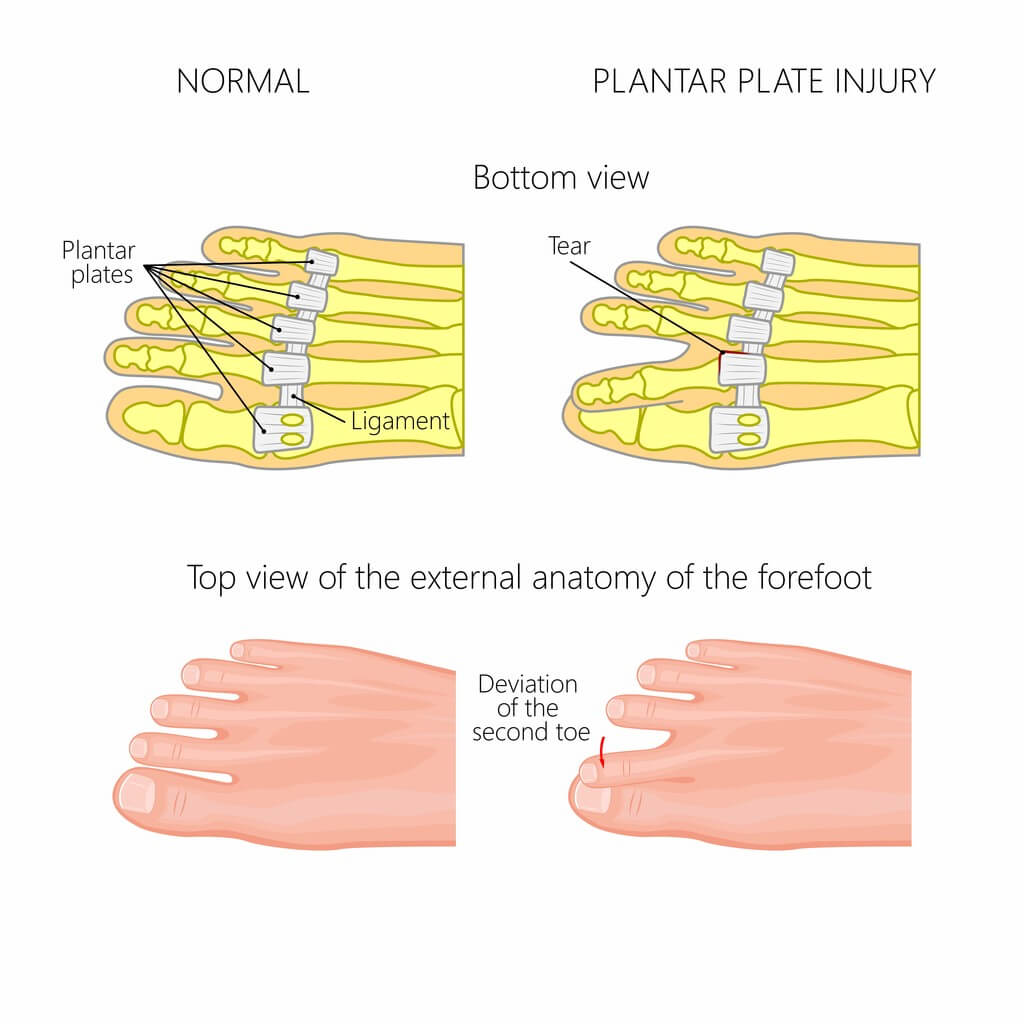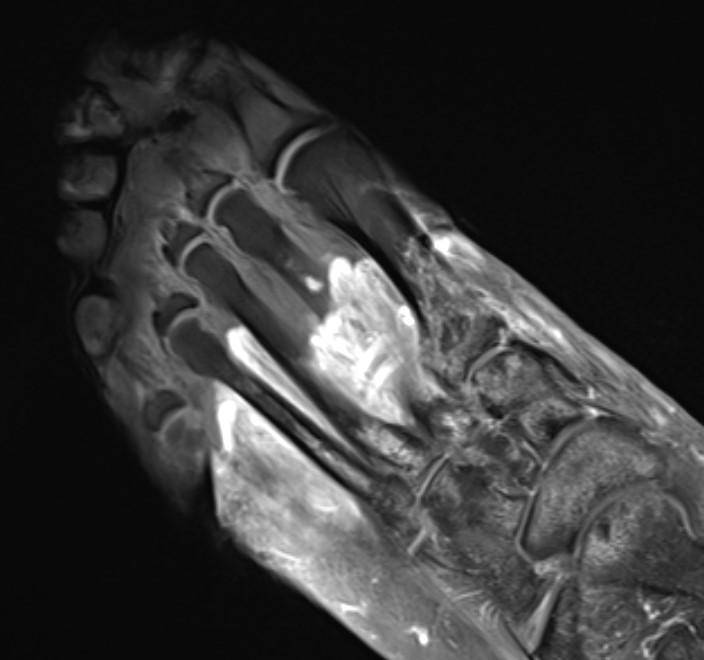What is it?
Your plantar plate is a thick ligament that runs along the ball of your foot, connecting to the joints. A plantar plate tear is a common foot injury which is caused by repetitive overload. Your plantar plate is a ligament that is on the underside of the joints at the ball of your feet.
Persistent pain and swelling under the ball of the foot that extends towards your toes is often the first sign of a plantar plate tear. This pain may be reproduced by bending your toe upwards. Some swelling may be visible on the top of your foot. Sometimes there can be redness. Often a sensation of ‘walking on the bones of the foot’ will be described, and a ‘V’ sign between the toes may be present, where two toes have separated further from one another than what is normal due to a plantar plate tear. You may experience swelling, and tenderness underneath the joint.
Causes
The reasons for the overload can be due to the your individual anatomy, over pronation (rolling in), hyper-mobile joints and incorrect casual and/or running shoes.
Treatment
A special test called the modified Lachman’s test can be performed by your therapist to assess your situation. Ultrasound or MRI can sometimes be important to determine the extent of a potential tear. This is especially true if you have a lot of pain or a claw toe deformity.
Treatment involves offloading the area using padding and stiff-soled shoes. A taping technique called ribbon taping can be used to reduce any claw toe deformity . Icing, non-steroidal anti-inflammatory drugs and active rest is also important to help settle the condition down. An orthotic can be used once a positive result has been obtained using functional foot taping. A metatarsal pad is added onto the device as well to deflect pressure away from the affected area and to improve loading patterns.
Written by Travis Rohner PT


